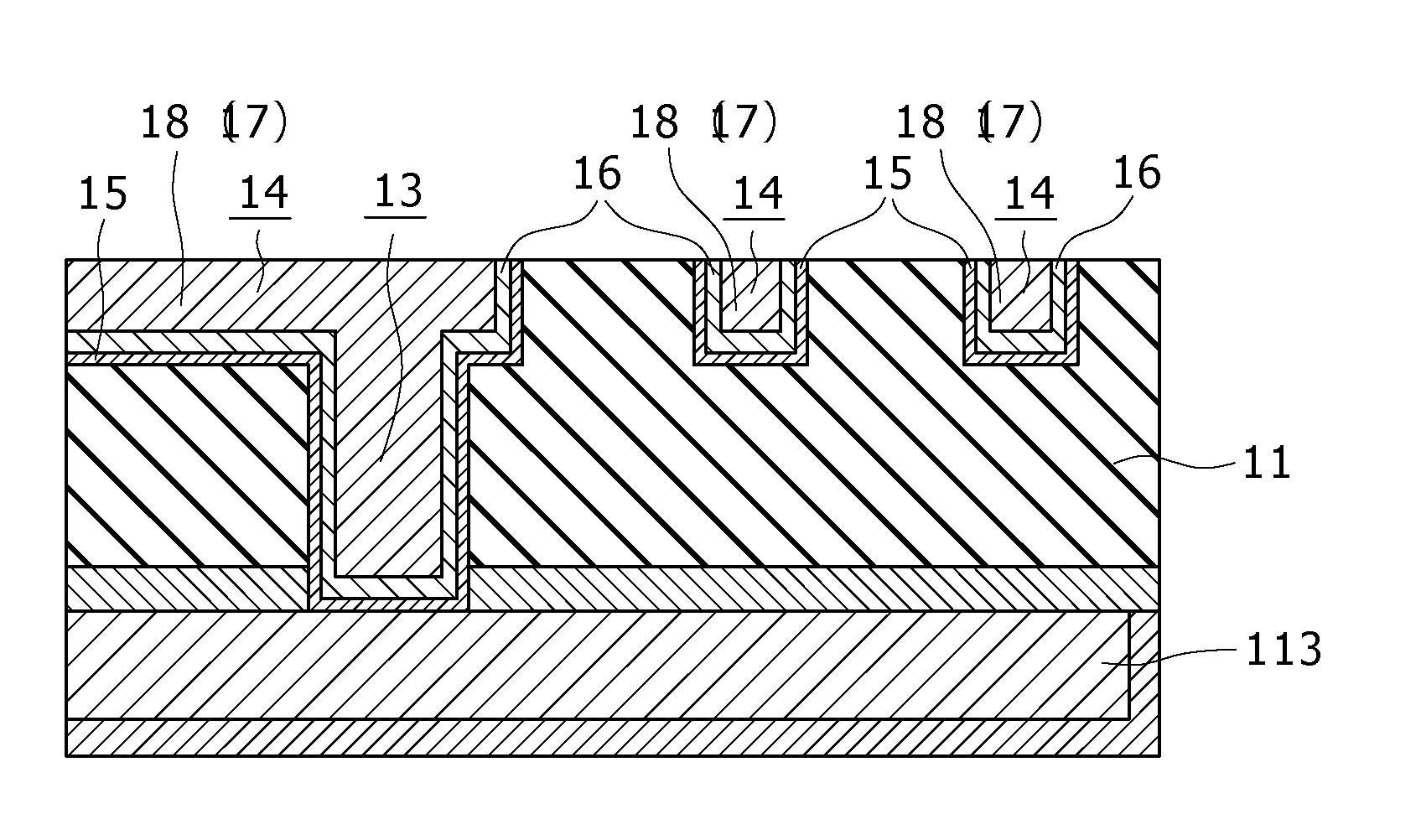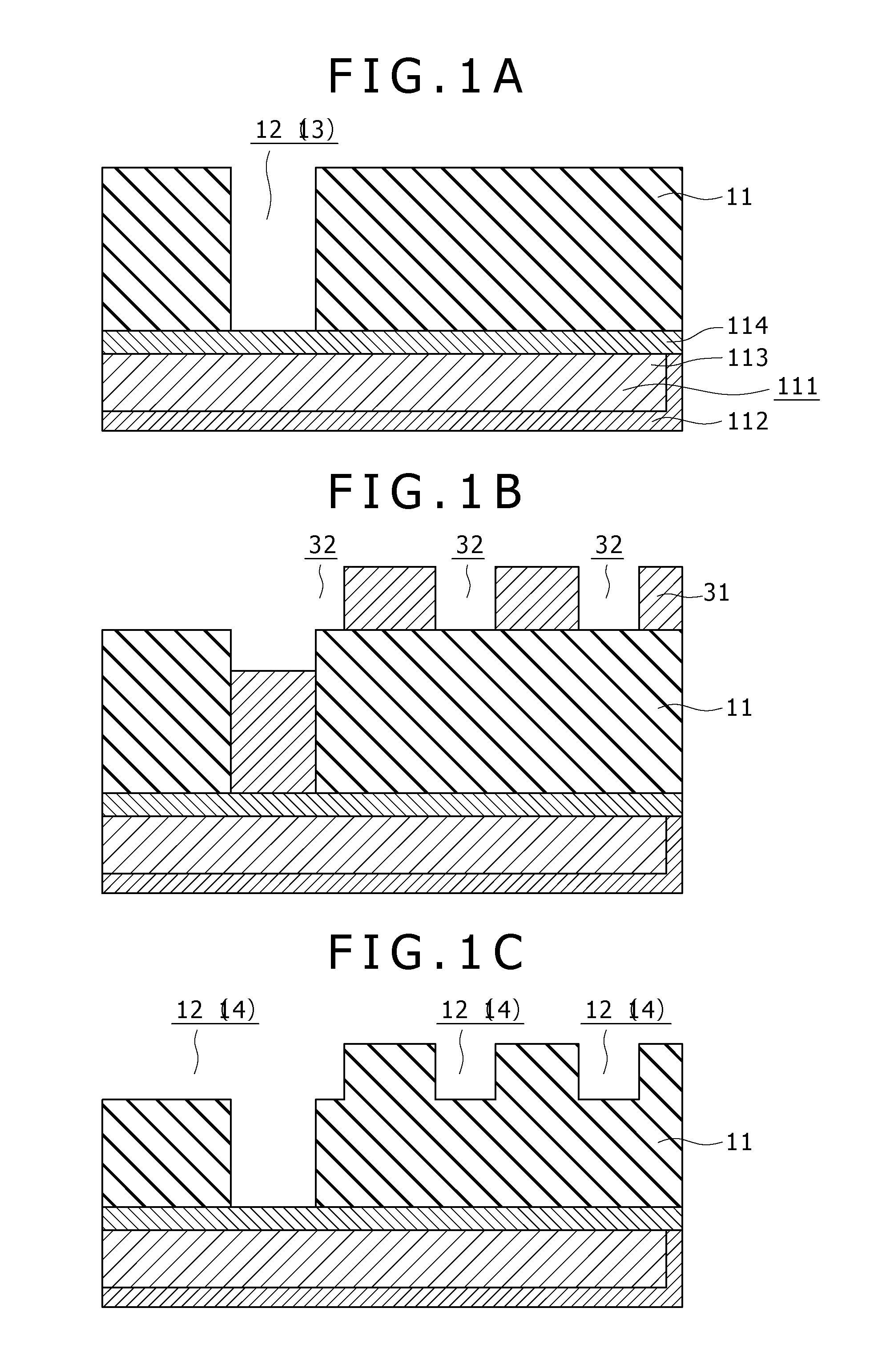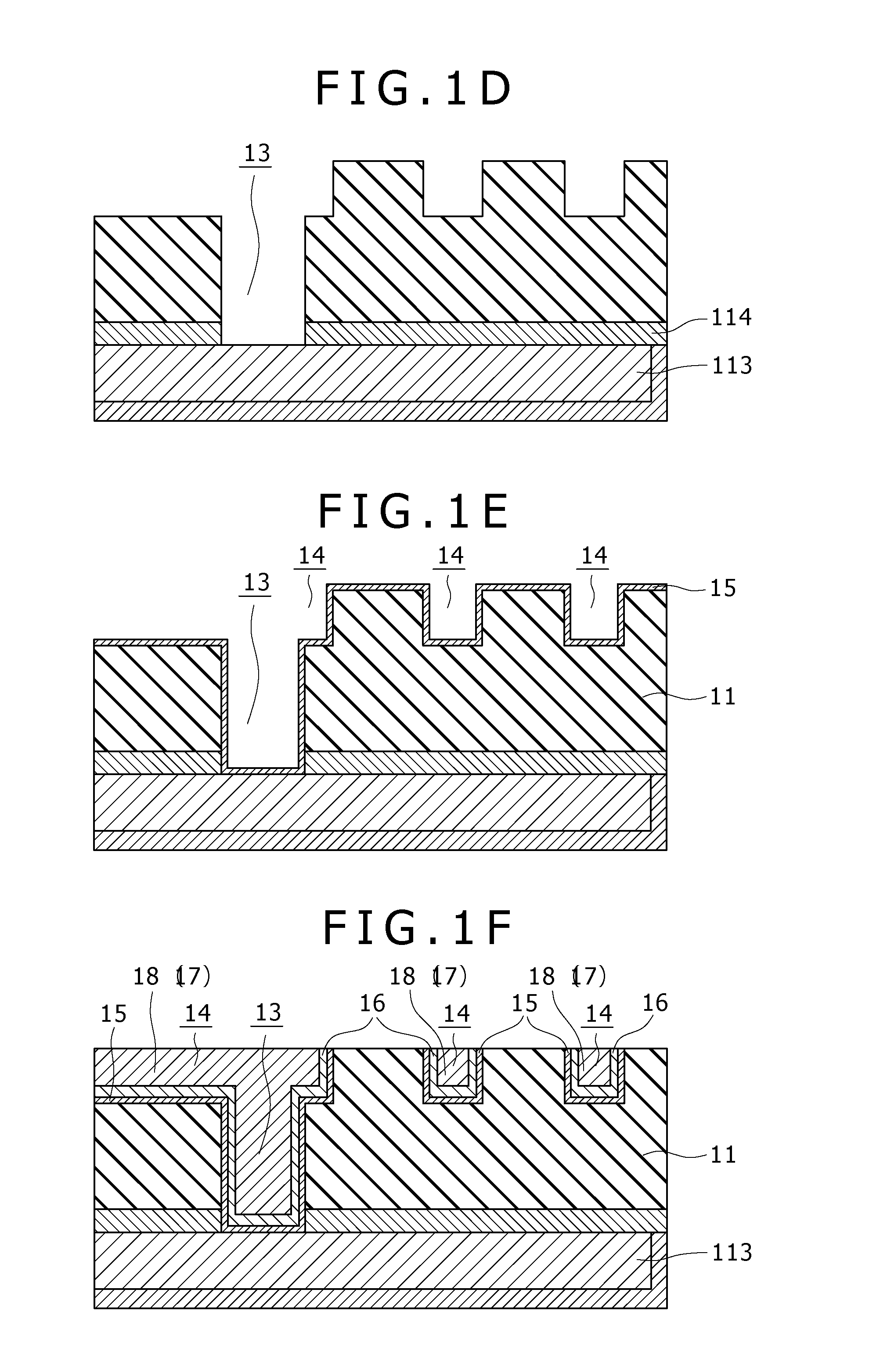Method of manufacturing semiconductor device
a manufacturing method and technology of semiconductors, applied in semiconductor/solid-state device manufacturing, basic electric elements, electric devices, etc., can solve the problems of oozing out of metal, hygroscopic, and easy plasma damage of low-permittivity films, and achieve enhanced adhesion between seal layers and insulation films, enhanced density, and recovery of silicon (si) dangling bonds
- Summary
- Abstract
- Description
- Claims
- Application Information
AI Technical Summary
Benefits of technology
Problems solved by technology
Method used
Image
Examples
first embodiment
[0040]Now, the method of manufacturing a semiconductor device in the present invention will be described below, referring to manufacturing step sectional views shown in FIGS. 1A to 1F.
[0041]As shown in FIG. 1A, a wiring groove 111 is formed in an insulating film (not shown) formed on a semiconductor substrate (not shown), and a wiring 113 is formed in the inside of the wiring groove 111, with a barrier metal layer 112 therebetween. The wiring 113 is formed from copper in a thickness of 60 nm. Next, a barrier layer 114 covering the wiring 113 is formed. The barrier layer 114 includes a silicon carbonitride (SiCN) film formed by a chemical vapor deposition (e.g., PE-CVD (plasma enhancement CVD)) method, and is formed in a thickness of 30 nm. Next, a insulation film 11 including a silicon oxide insulating film is formed on the barrier layer 114. The barrier layer 114 includes, for example, an MSQ (methyl-hydrogen-silosesquioxane) porous film having a permittivity of not more than 2.5, ...
second embodiment
[0074]In addition, in the manufacturing method the steps of forming the seal layer 15 and performing the EB-cure or UV-cure may be conducted immediately before the removal of the barrier layer 114 from the inside of the via hole 92, as illustrated in FIG. 5. In this case, the seal layer 15 is formed on the inside surfaces of the via hole 92 and the wiring grooves 93 and on the surface of the first hard mask 83. The conditions for forming the seal layer 15 are the same as the above-mentioned conditions. Thereafter, EB-cure or UV-cure is performed.
[0075]Besides, the steps described referring to FIGS. 4G and 4H may be incorporated into the manufacturing method according to the second embodiment. When the steps of forming the seal layer 15 and performing the EB-cure or UV-cure immediately before the removal of the barrier layer 114 from the inside of the via hole 92 and the steps of forming the seal layer 15 and performing the EB-cure or UV-cure immediately after the removal of the bar...
PUM
 Login to View More
Login to View More Abstract
Description
Claims
Application Information
 Login to View More
Login to View More - R&D
- Intellectual Property
- Life Sciences
- Materials
- Tech Scout
- Unparalleled Data Quality
- Higher Quality Content
- 60% Fewer Hallucinations
Browse by: Latest US Patents, China's latest patents, Technical Efficacy Thesaurus, Application Domain, Technology Topic, Popular Technical Reports.
© 2025 PatSnap. All rights reserved.Legal|Privacy policy|Modern Slavery Act Transparency Statement|Sitemap|About US| Contact US: help@patsnap.com



